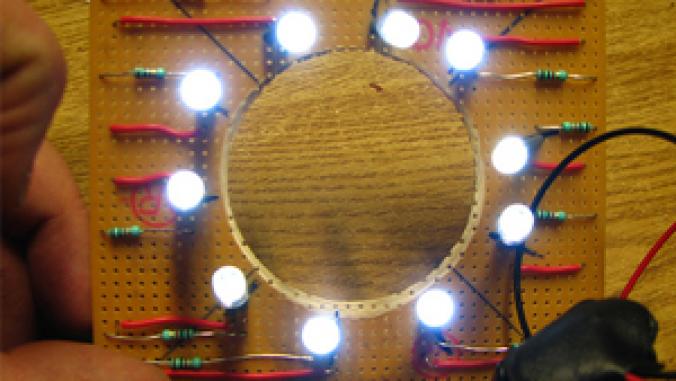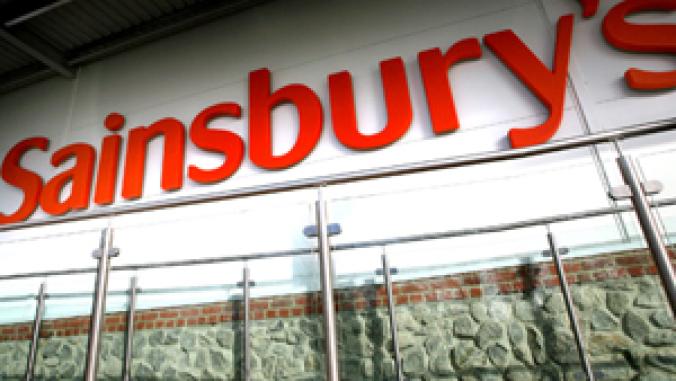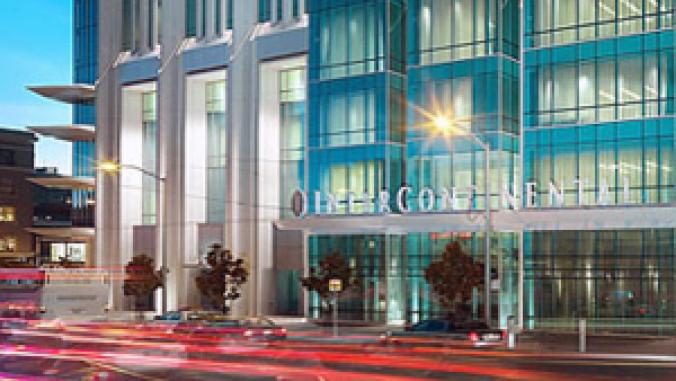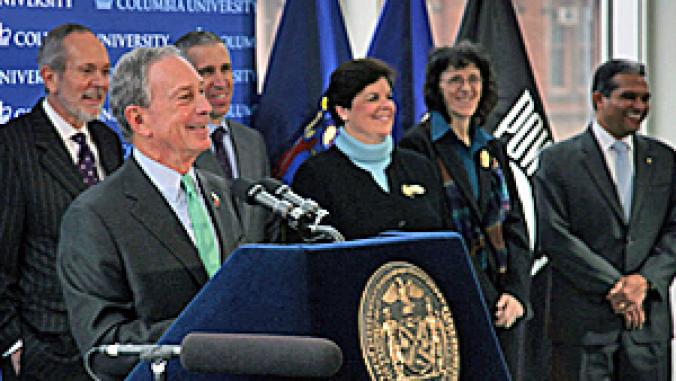New Green Rating System Offers Guidance for Existing Buildings
Pilot program sheds light on how owners might use rating system. By David Kozlowski
Pilot program sheds light on how owners might use rating system. By David Kozlowski
The lineup of green buildings right now is packed with new buildings, designed and built from the ground up with energy- and environment-saving features.
Increasingly among them are buildings that registered with the U.S. Green Building Council’s two-year-old LEED® (Leadership in Energy and Environmental Design) program, which recognizes new construction and major renovations in buildings. With more than 600 buildings signed up for the certification program and dozens of buildings certified, LEED is drawing a lot of interest from building owners and architects.
But until recently there had been no similar program for the operation of the 4.5 million existing buildings in the United States. Now the council is poised to launch its newest LEED program, LEED for Existing Buildings (LEED-EB). LEED-EB is a program to help owners reduce the environmental impact of existing buildings and to maintain those reductions.
The latest draft of LEED-EB is being tested in a pilot program, which is nearing conclusion. The council expects to announce the results of the pilot this summer. How will LEED-EB work for the many types of buildings in the marketplace? What will its impact be? The experience of building owners in the pilot program is shedding some light on these questions and on how building owners can use LEED-EB when it’s released later this year.
While LEED for new construction and renovation is focused on sustainable design and construction, LEED-EB is focused on getting buildings up to a sustainable level of operation and then keeping them operating at that high level.
Fine-tuning Operations
LEED-EB is a set of energy and environmental performance standards and a rating system that is based in part on LEED for new construction and renovation. LEED-EB focuses on verification and periodic recertification of a building’s operational performance and execution of green maintenance policies throughout the life of the building.
LEED-EB is a checklist system in which a project earns points for each credit met. It is organized into five categories: sustainable sites, water efficiency, materials and resources, energy and atmosphere, and indoor environmental quality. There are four levels of achievement: Certified, Silver, Gold and Platinum. The greener the building, the greater number of points and the higher the rating. Under LEED for construction and renovation there are a possible 69 points; 28 are needed to be certified. The point totals for LEED-EB will be determined by the final balloted version of LEED-EB.
LEED-EB is like an owner’s manual for a building because it provides specific guidelines for continuous improvement in operation and maintenance. That is, while LEED for new construction and renovation gets a green building started on the right foot with a proper design, LEED-EB helps maintain design intent.
“The performance of buildings, even new buildings, often looks like a saw’s teeth,” says Michael Arny, co-chair of the LEED-EB committee. “If performance isn’t what it should be, building management goes on a mission to improve it. They achieve a high point, then performance slips again. LEED-EB helps bring building performance to a higher level and then keeps it there. It helps put operations in the forefront of building ownership. It also provides a communication tool that allows building owners and operators to develop a joint vision of sustainable operations of their building.”
An owner seeking a LEED-EB certification must track for one year the building’s performance and record data showing that the building meets LEED-EB prerequisites and relevant credits. The only exception to this is for the initial certification. Then, owners only have to track performance for the most recent three months. Recertification will likely be annual, but the exact frequency is being determined during the pilot.
For people familiar with LEED for new construction, LEED-EB looks a little different, Arny says. “LEED is very focused on design, modeling and construction,” he says.
“LEED-EB is focused on how a building actually performs and the ongoing environmental impact of the buildings.” So rather than projecting energy savings, for instance, owners must document actual energy use, which requires a different approach to documentation, he says.
Once the building owner determines the key parameters or credits to track, then all that is left is to report the information, Arny says. In some cases, especially when it comes to energy, owners may already be tracking much of this information, he says.
Real-world Test
Putting the draft version of LEED-EB through its paces is the job of the participants in the pilot program. The pilot projects consist of 65 geographically scattered buildings that cut across all market sectors and vary in size and shape. They total 17 million square feet of floor space and are owned by companies responsible for a total 450 million square feet.
The response to the pilot program has been very positive, Arny says. The council set a goal of 50 buildings in the program, and it cut off the number of applicants at 65.
Robert Hascall, senior associate vice president for facilities management at Emory University in Atlanta, says there is a growing demand for LEED-EB.
Too often, buildings aren’t run effectively and efficiently when they are turned over to facility staff because senior management hasn’t made operations a high priority.
“LEED-EB helps raise awareness with senior management,” he says. “It provides a basis to properly assess buildings and an incentive to do so.”
The real estate giant Hines has five pilot projects registered. Jerry Lea, senior vice president for Hines, says he expects four out of the five to be certified — one could possibly earn a Platinum. All five buildings are speculative office buildings, ranging from 400,000 to 1.3 million square feet. They also are all Energy Star-labeled buildings.
Because the energy optimization section of LEED-EB utilizes the existing Energy Star Benchmarking tool, the Hines buildings scored very well in this category.
Nigel Howard, USGBC vice president and director of LEED, is optimistic about the involvement of the large corporate organizations in the pilot and recognizes the market transformation potential of LEED-EB.
“LEED-EB will likely enjoy the same or better market penetration that LEED for new construction has enjoyed but in a market that is 80 times as large,” Howard says.
Organizations seeking ISO 14000 accreditation may also find LEED-EB helpful in the development of their ISO compliance methodology, he says.
“I am enthusiastic about LEED-EB,” Hines’ Lea says. But he admits to not being so initially. “I didn’t think we would get any building certified. This validates our efforts to improve the energy performance and other aspects that make buildings energy efficient and healthy.”
Barry Giles, building services engineer for Moss Landing Marine Laboratories with California State University (CSU), applied for the LEED-EB pilot program as soon as he heard about it. Responsible for five offices and labs at the site, he picked a 60,000-square-foot lab as his pilot project.
“We’re doing a good job here,” Giles says. “We know we have a good building. Now we want to show it.”
The lab is built on the coast with plenty of views of Monterey Bay. It is actually the second lab built near that site; the first was destroyed in the Loma Prieta earthquake in 1989. California’s Title 24 was a big help in making the new facility energy efficient. And its location contributed to the incentive to make nearly every room daylit. It wasn’t built as a green building per se, but it achieves many of a green building’s attributes.
“LEED-EB is a bonus for us and CSU in general,” Giles says. “We want to show we’re doing the best we can for the system and the community.”
Emory’s building staff, which has had a focus on green buildings for years, finds there is a lot in LEED-EB that resembles how the school designs and operates its buildings. Hascall submitted its 120,000-square-foot Roberto C. Goizueta business school building, completed in 1997.
The university already has one green building certified under LEED for new construction. Hascall says that LEED for new construction and renovation and LEED-EB are naturals for the university. The entire administration, from the president on down, has a commitment to the environment and thinks the school should represent this in much of what it does, including building and operating facilities. The university has made a considerable effort to green its campus, starting early in 2000. And the environment is part of the strategic goals for the facility organization.
Adopting LEED-EB wasn’t particularly difficult because the school already had stringent design guidelines in place, Hascall says.
LEED-EB also has great potential for the commercial marketplace, even greater than Energy Star does, says Bob Heimkes, regional engineering manager for the Midwest and Southeast regions for Hines, because the system covers so many more areas in buildings in which tenants are showing increasing interest.
“We know people are interested in the environment,” he says. “We know people want spaces that are healthier for them. We think tenants are going to start acting on this.”
Working Out Wrinkles
The pilot process for LEED-EB offers the council the opportunity to engage pilot participants — organizations who will be putting the product to use in the future — in a dialogue that examines credit achievement thresholds and any contentious issues that may arise.
LEED-EB is a nontechnical document that allows for a quick overview of sustainable operation and maintenance practices. When it comes to actually documenting performance, the process does become more complicated and time consuming. Although the council offers technical backup and support, documenting performance can seem daunting, especially if one is unfamiliar with LEED. Giles with Moss Landing labs realized this after he received word his project was accepted.
“The good news was we got in,” he says. “The bad news was we got in.” Because one of the goals of the pilot process is to evaluate appropriate levels of documentation, Giles knew going into it there was a lot of paperwork, which occasionally tempered his enthusiasm. Giles raised the issue of documentation and asked the council if LEED-EB could adopt the format of the recently upgraded LEED for new construction and renovation, where signed spreadsheet-based letter templates, certifying achievement of the credit requirements, take the place of architectural and engineer drawings, product cut sheets and detailed calculations. As a result of Giles’ comments, which have been echoed by several other LEED-EB pilot participants, the LEED-EB committee is developing streamlined documentation and recertification procedures for incorporation into the balloted version of LEED-EB.
The LEED-EB development committee is discussing comments made by Giles, Hines' Heimkes and other pilot participants. Some issues are the appropriate thresholds for Alternative Fueled Vehicle (AFV) parking and refueling capacity; retrocommissioning prerequisites and credits; and project proximity to mass transit lines.
“I don’t know if they will accept our suggestions,” says Giles, “but that’s the reason for pilot projects — to explain why we can’t attain certain points and suggest ways they could be improved.”
Hines, like many of the pilot project participants, has completed the review phase and is beginning to implement some of the LEED-EB strategies to help it achieve more points. A close initial assessment of LEED-EB helps owners determine which points they could achieve, which points they may need some interpretation on and which points they won’t likely receive. Hines, for instance, isn’t likely to receive any points for reduction of the urban heat island effect for one of its pilot projects because the building fills the entire site from sidewalk to sidewalk. Hines won’t even try to fulfill that credit.
A Tool for the Ages
The council is gathering input from the pilot projects and making decisions on the final format of LEED-EB, which it expects to launch officially this summer. Arny says the council expects to be certifying buildings by late 2003.
At the heart of LEED-EB is really communication.
“LEED-EB offers opportunities that aren’t being realized by building owners and operators,” Hines’ Heimkes says. “If owners knew what kind of opportunities and what kinds of technologies and materials were available to them, then a lot more of them would be making green choices. LEED-EB sends owners in that direction.”
“If you asked most building owners whether they would want all attributes that green buildings offer, most would say yes,” says Arny, LEED-EB’s committee chair. “EB provides the guide and the benchmarks for doing this.”
And Arny and others say that LEED-EB will continue to provide important information on how the building is doing throughout its life. This is important for all buildings, including green buildings.
But LEED-EB is also, in its current phase, a work in progress, Arny says.
“If at the end of the pilot stage we find something is too easy, the council will raise the bar,” he says. “If we find that something is too hard, the council will adjust the bar down. We want it to be a challenge but practical to use.”
LEED-EB is a natural fit for the owners of buildings already certified under LEED for new construction.
“All owners of LEED-certified buildings will want to go into LEED-EB right away,” Arny says. “If a building owner made an investment to see that the building is designed to be operated in a sustainable way, then it makes sense to make sure that performance is consistent. If there is one thing for sure, it’s that if a sustainable operation isn’t maintained, it degrades over time.”
U.S. Green Building Council Developing New LEED Programs
The U.S. Green Building Council launched its flagship certification system, LEED 2.0 (Leadership in Energy and Environmental Design) rating system for new construction in the spring of 2000.
The backbone of the rating system is a checklist-like document that takes users through 69 possible points, ranging from energy efficiency and water conservation to building site and recycling issues. Owners need to meet prerequisites and satisfy a minimum number of credits to certify a project. The more credits satisfied, the higher the rating.
This system now is being used as the basis for development of new council rating systems in various draft stages. Beside LEED for Existing Buildings, the council is developing LEED for Core and Shell and LEED for Commercial Interiors. The council is also embarking on application guides tailored to the needs of particular sectors such as retail, schools, laboratories, and health care facilities.
---------
This article first appeared in February 2003 issue of Building Operating Management.
The lineup of green buildings right now is packed with new buildings, designed and built from the ground up with energy- and environment-saving features.
Increasingly among them are buildings that registered with the U.S. Green Building Council’s two-year-old LEED® (Leadership in Energy and Environmental Design) program, which recognizes new construction and major renovations in buildings. With more than 600 buildings signed up for the certification program and dozens of buildings certified, LEED is drawing a lot of interest from building owners and architects.
But until recently there had been no similar program for the operation of the 4.5 million existing buildings in the United States. Now the council is poised to launch its newest LEED program, LEED for Existing Buildings (LEED-EB). LEED-EB is a program to help owners reduce the environmental impact of existing buildings and to maintain those reductions.
The latest draft of LEED-EB is being tested in a pilot program, which is nearing conclusion. The council expects to announce the results of the pilot this summer. How will LEED-EB work for the many types of buildings in the marketplace? What will its impact be? The experience of building owners in the pilot program is shedding some light on these questions and on how building owners can use LEED-EB when it’s released later this year.
While LEED for new construction and renovation is focused on sustainable design and construction, LEED-EB is focused on getting buildings up to a sustainable level of operation and then keeping them operating at that high level.
Fine-tuning Operations
LEED-EB is a set of energy and environmental performance standards and a rating system that is based in part on LEED for new construction and renovation. LEED-EB focuses on verification and periodic recertification of a building’s operational performance and execution of green maintenance policies throughout the life of the building.
LEED-EB is a checklist system in which a project earns points for each credit met. It is organized into five categories: sustainable sites, water efficiency, materials and resources, energy and atmosphere, and indoor environmental quality. There are four levels of achievement: Certified, Silver, Gold and Platinum. The greener the building, the greater number of points and the higher the rating. Under LEED for construction and renovation there are a possible 69 points; 28 are needed to be certified. The point totals for LEED-EB will be determined by the final balloted version of LEED-EB.
LEED-EB is like an owner’s manual for a building because it provides specific guidelines for continuous improvement in operation and maintenance. That is, while LEED for new construction and renovation gets a green building started on the right foot with a proper design, LEED-EB helps maintain design intent.
“The performance of buildings, even new buildings, often looks like a saw’s teeth,” says Michael Arny, co-chair of the LEED-EB committee. “If performance isn’t what it should be, building management goes on a mission to improve it. They achieve a high point, then performance slips again. LEED-EB helps bring building performance to a higher level and then keeps it there. It helps put operations in the forefront of building ownership. It also provides a communication tool that allows building owners and operators to develop a joint vision of sustainable operations of their building.”
An owner seeking a LEED-EB certification must track for one year the building’s performance and record data showing that the building meets LEED-EB prerequisites and relevant credits. The only exception to this is for the initial certification. Then, owners only have to track performance for the most recent three months. Recertification will likely be annual, but the exact frequency is being determined during the pilot.
For people familiar with LEED for new construction, LEED-EB looks a little different, Arny says. “LEED is very focused on design, modeling and construction,” he says.
“LEED-EB is focused on how a building actually performs and the ongoing environmental impact of the buildings.” So rather than projecting energy savings, for instance, owners must document actual energy use, which requires a different approach to documentation, he says.
Once the building owner determines the key parameters or credits to track, then all that is left is to report the information, Arny says. In some cases, especially when it comes to energy, owners may already be tracking much of this information, he says.
Real-world Test
Putting the draft version of LEED-EB through its paces is the job of the participants in the pilot program. The pilot projects consist of 65 geographically scattered buildings that cut across all market sectors and vary in size and shape. They total 17 million square feet of floor space and are owned by companies responsible for a total 450 million square feet.
The response to the pilot program has been very positive, Arny says. The council set a goal of 50 buildings in the program, and it cut off the number of applicants at 65.
Robert Hascall, senior associate vice president for facilities management at Emory University in Atlanta, says there is a growing demand for LEED-EB.
Too often, buildings aren’t run effectively and efficiently when they are turned over to facility staff because senior management hasn’t made operations a high priority.
“LEED-EB helps raise awareness with senior management,” he says. “It provides a basis to properly assess buildings and an incentive to do so.”
The real estate giant Hines has five pilot projects registered. Jerry Lea, senior vice president for Hines, says he expects four out of the five to be certified — one could possibly earn a Platinum. All five buildings are speculative office buildings, ranging from 400,000 to 1.3 million square feet. They also are all Energy Star-labeled buildings.
Because the energy optimization section of LEED-EB utilizes the existing Energy Star Benchmarking tool, the Hines buildings scored very well in this category.
Nigel Howard, USGBC vice president and director of LEED, is optimistic about the involvement of the large corporate organizations in the pilot and recognizes the market transformation potential of LEED-EB.
“LEED-EB will likely enjoy the same or better market penetration that LEED for new construction has enjoyed but in a market that is 80 times as large,” Howard says.
Organizations seeking ISO 14000 accreditation may also find LEED-EB helpful in the development of their ISO compliance methodology, he says.
“I am enthusiastic about LEED-EB,” Hines’ Lea says. But he admits to not being so initially. “I didn’t think we would get any building certified. This validates our efforts to improve the energy performance and other aspects that make buildings energy efficient and healthy.”
Barry Giles, building services engineer for Moss Landing Marine Laboratories with California State University (CSU), applied for the LEED-EB pilot program as soon as he heard about it. Responsible for five offices and labs at the site, he picked a 60,000-square-foot lab as his pilot project.
“We’re doing a good job here,” Giles says. “We know we have a good building. Now we want to show it.”
The lab is built on the coast with plenty of views of Monterey Bay. It is actually the second lab built near that site; the first was destroyed in the Loma Prieta earthquake in 1989. California’s Title 24 was a big help in making the new facility energy efficient. And its location contributed to the incentive to make nearly every room daylit. It wasn’t built as a green building per se, but it achieves many of a green building’s attributes.
“LEED-EB is a bonus for us and CSU in general,” Giles says. “We want to show we’re doing the best we can for the system and the community.”
Emory’s building staff, which has had a focus on green buildings for years, finds there is a lot in LEED-EB that resembles how the school designs and operates its buildings. Hascall submitted its 120,000-square-foot Roberto C. Goizueta business school building, completed in 1997.
The university already has one green building certified under LEED for new construction. Hascall says that LEED for new construction and renovation and LEED-EB are naturals for the university. The entire administration, from the president on down, has a commitment to the environment and thinks the school should represent this in much of what it does, including building and operating facilities. The university has made a considerable effort to green its campus, starting early in 2000. And the environment is part of the strategic goals for the facility organization.
Adopting LEED-EB wasn’t particularly difficult because the school already had stringent design guidelines in place, Hascall says.
LEED-EB also has great potential for the commercial marketplace, even greater than Energy Star does, says Bob Heimkes, regional engineering manager for the Midwest and Southeast regions for Hines, because the system covers so many more areas in buildings in which tenants are showing increasing interest.
“We know people are interested in the environment,” he says. “We know people want spaces that are healthier for them. We think tenants are going to start acting on this.”
Working Out Wrinkles
The pilot process for LEED-EB offers the council the opportunity to engage pilot participants — organizations who will be putting the product to use in the future — in a dialogue that examines credit achievement thresholds and any contentious issues that may arise.
LEED-EB is a nontechnical document that allows for a quick overview of sustainable operation and maintenance practices. When it comes to actually documenting performance, the process does become more complicated and time consuming. Although the council offers technical backup and support, documenting performance can seem daunting, especially if one is unfamiliar with LEED. Giles with Moss Landing labs realized this after he received word his project was accepted.
“The good news was we got in,” he says. “The bad news was we got in.” Because one of the goals of the pilot process is to evaluate appropriate levels of documentation, Giles knew going into it there was a lot of paperwork, which occasionally tempered his enthusiasm. Giles raised the issue of documentation and asked the council if LEED-EB could adopt the format of the recently upgraded LEED for new construction and renovation, where signed spreadsheet-based letter templates, certifying achievement of the credit requirements, take the place of architectural and engineer drawings, product cut sheets and detailed calculations. As a result of Giles’ comments, which have been echoed by several other LEED-EB pilot participants, the LEED-EB committee is developing streamlined documentation and recertification procedures for incorporation into the balloted version of LEED-EB.
The LEED-EB development committee is discussing comments made by Giles, Hines' Heimkes and other pilot participants. Some issues are the appropriate thresholds for Alternative Fueled Vehicle (AFV) parking and refueling capacity; retrocommissioning prerequisites and credits; and project proximity to mass transit lines.
“I don’t know if they will accept our suggestions,” says Giles, “but that’s the reason for pilot projects — to explain why we can’t attain certain points and suggest ways they could be improved.”
Hines, like many of the pilot project participants, has completed the review phase and is beginning to implement some of the LEED-EB strategies to help it achieve more points. A close initial assessment of LEED-EB helps owners determine which points they could achieve, which points they may need some interpretation on and which points they won’t likely receive. Hines, for instance, isn’t likely to receive any points for reduction of the urban heat island effect for one of its pilot projects because the building fills the entire site from sidewalk to sidewalk. Hines won’t even try to fulfill that credit.
A Tool for the Ages
The council is gathering input from the pilot projects and making decisions on the final format of LEED-EB, which it expects to launch officially this summer. Arny says the council expects to be certifying buildings by late 2003.
At the heart of LEED-EB is really communication.
“LEED-EB offers opportunities that aren’t being realized by building owners and operators,” Hines’ Heimkes says. “If owners knew what kind of opportunities and what kinds of technologies and materials were available to them, then a lot more of them would be making green choices. LEED-EB sends owners in that direction.”
“If you asked most building owners whether they would want all attributes that green buildings offer, most would say yes,” says Arny, LEED-EB’s committee chair. “EB provides the guide and the benchmarks for doing this.”
And Arny and others say that LEED-EB will continue to provide important information on how the building is doing throughout its life. This is important for all buildings, including green buildings.
But LEED-EB is also, in its current phase, a work in progress, Arny says.
“If at the end of the pilot stage we find something is too easy, the council will raise the bar,” he says. “If we find that something is too hard, the council will adjust the bar down. We want it to be a challenge but practical to use.”
LEED-EB is a natural fit for the owners of buildings already certified under LEED for new construction.
“All owners of LEED-certified buildings will want to go into LEED-EB right away,” Arny says. “If a building owner made an investment to see that the building is designed to be operated in a sustainable way, then it makes sense to make sure that performance is consistent. If there is one thing for sure, it’s that if a sustainable operation isn’t maintained, it degrades over time.”
U.S. Green Building Council Developing New LEED Programs
The U.S. Green Building Council launched its flagship certification system, LEED 2.0 (Leadership in Energy and Environmental Design) rating system for new construction in the spring of 2000.
The backbone of the rating system is a checklist-like document that takes users through 69 possible points, ranging from energy efficiency and water conservation to building site and recycling issues. Owners need to meet prerequisites and satisfy a minimum number of credits to certify a project. The more credits satisfied, the higher the rating.
This system now is being used as the basis for development of new council rating systems in various draft stages. Beside LEED for Existing Buildings, the council is developing LEED for Core and Shell and LEED for Commercial Interiors. The council is also embarking on application guides tailored to the needs of particular sectors such as retail, schools, laboratories, and health care facilities.
---------
This article first appeared in February 2003 issue of Building Operating Management.




